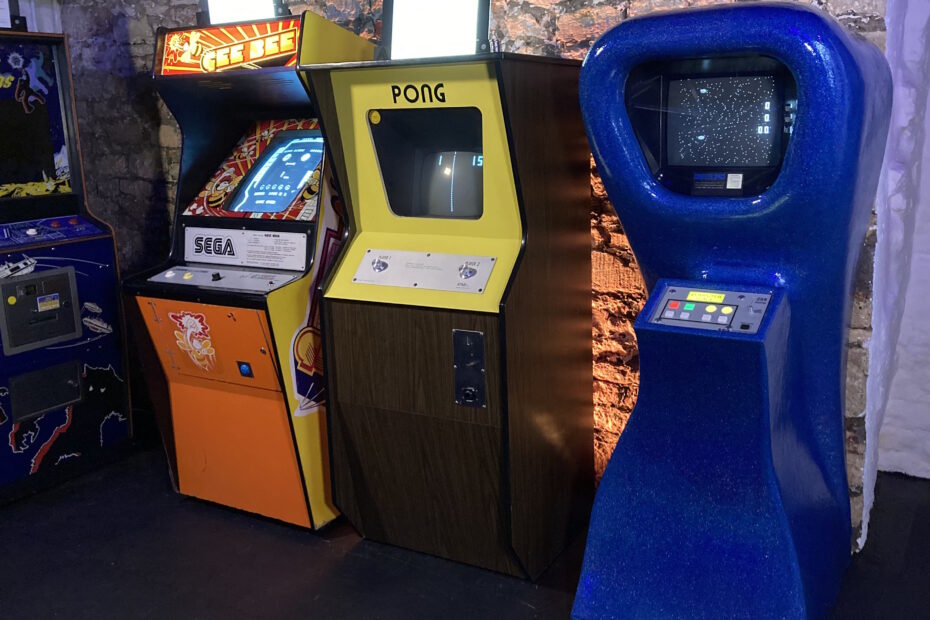Making a Computer Space Arcade Replica
Posted by Richard Horne on 10th May 2024
In this post, our commercial director, Richard Horne shows the steps of how to design, 3D print and build a full sized replica of the worlds very first video arcade machine (Computer Space) from 1971.
Computer Space was designed and launched in 1971 by Nolan Bushnell and Ted Dabney, manufactured by Nutting associates.

The original cabinet was moulded from fibreglass and wood and made for Nutting by a hot tub manufacturer. Resin and fiberglass along with glitter were used for many of the run of around 1500 machines.
The game itself was not particularly successful, but it did show Nolan that there was a market for coin operated video games that could be even more popular than pinball…
Their next game was Pong, a classic and one that launched the entire amusement arcade industry and also sparked a surge in cloned systems just to meet with demand.
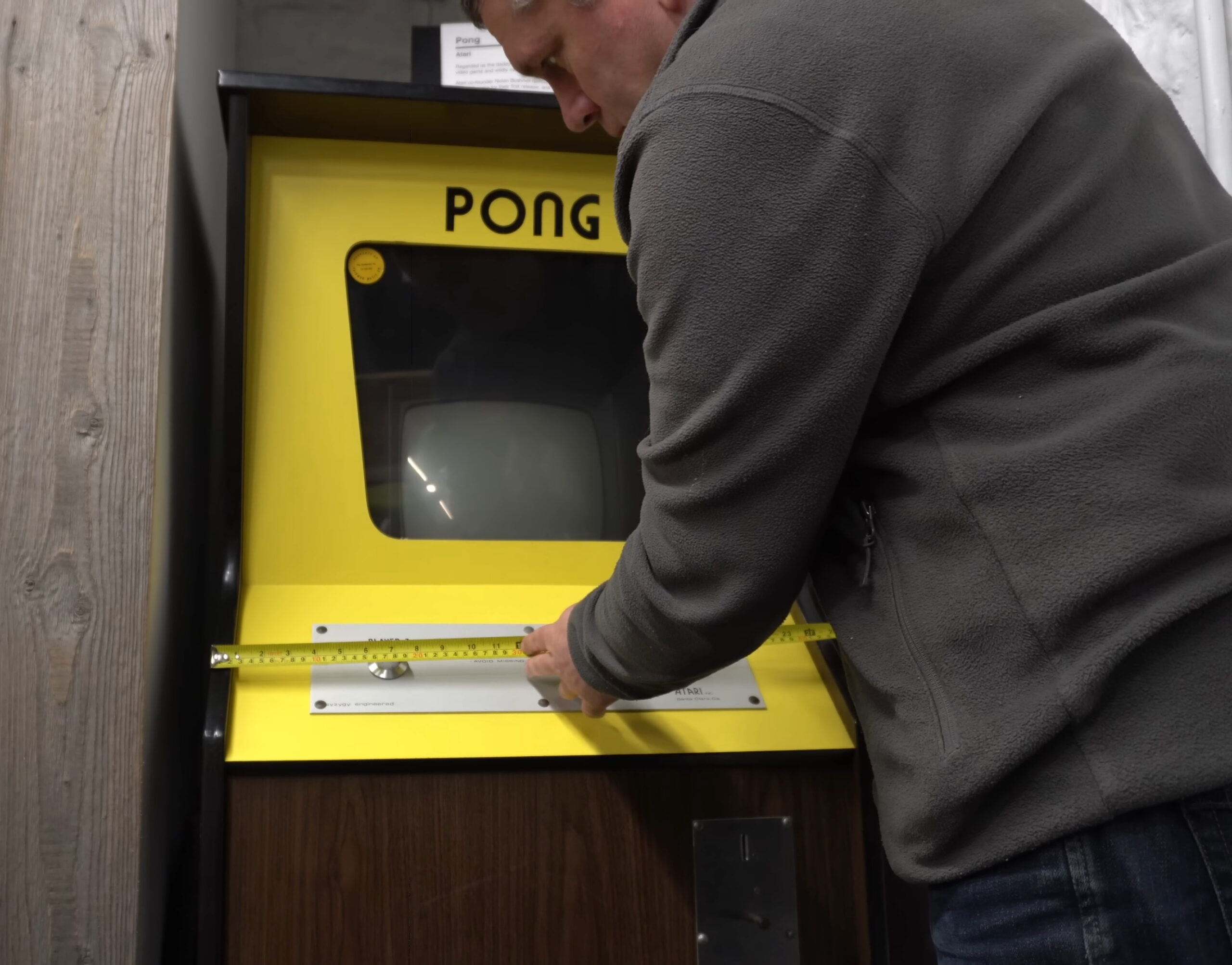
There were a number of pictures online that showed Pong next to an original Computer Space cabinet, so we were able to use our Pong cabinet to scale many of the dimensions for the model.
Heber have been involved in video amusement machines since the 70’s as Marian electronics and Heber right to this day. We also have a 3D print farm so replicating the fiberglass look of the Computer Space cabinet was a straightforward task, but first we needed a model designed so we could 3D print all the parts.
In December 2023, Richard sculpted a replica cabinet shape based on images of the original machines. Scanning a real machine was considered and investigated a year before, but that was not possible at the time.
Two video’s below are available showing the process used to sculpt, 3D print, assemble, finish, paint and glitter finish this magnificent cabinet.
Fast forward to January 2024 and the 3D print farm at Heber was put to work printing just under 100 sections of this machine, 3DGloop was used to bond the parts together and after showing to the rest of the team, the machine was filled, sanded, painted and had a blue glitter-resin coat applied.
Electronics and a replica control panel were made along with a CRT monitor fitted, It’s now working and available to see and use at the Arcade Archive Museum in the UK.
All of the required files to 3D print your very own Computer Space cabinet are now available over on our Printables account as Multisystem. With these files and a little time and work, you could have a Computer Space too. Have fun!
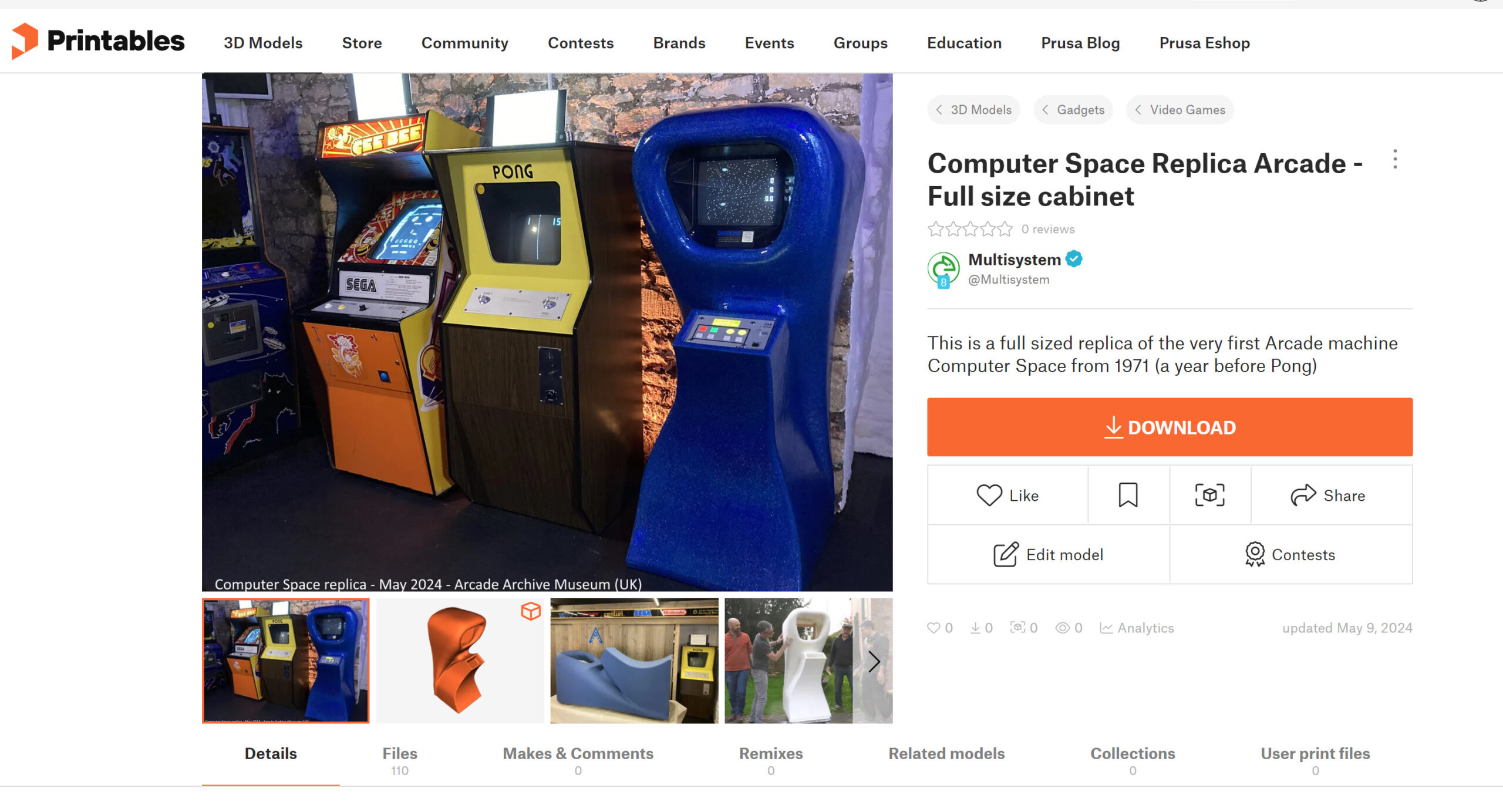
The finished replica machine is now sited at the Arcade Archive Museum in the UK – If you wish to visit the Arcade, please book a visit here – Welcome to the Retro Collective

We want to give a huge thank you to everyone involved in this project.
Special thank you to computerspacefan.com for such an amazing resource of information about the very first Video Arcade machine.
Attention to detail – Some details that visitors may never see, but we did them anyway.



Designed and 3D printed at Heber Ltd. By Richard Horne – @RichRap3D
This 3D model is provided with a Creative Commons Attribution license, you can use this for commercial or private use. You are welcome to remix, share and modify. Please attribute the original design to Heber Ltd. & Richard Horne.
If you want to know more about Computer Space, there is a lovely article all about this machine over on The history of How We Play -> Why Computer Space Was a Success – The History of How We Play (wordpress.com)
A press release from the Arcade Archive is included below, if you need any further details, please contact Heber ltd – via this website or directly.
Gaming Museum 3D Prints Historic Arcade Machine!
When the team at the Arcade Archive in Stroud opened their museum of historic arcade video games they were missing one important thing, the very start of the story.
In 1971 Nutting Associates engineers Nolan Bushnell and Ted Dabney, who later formed Atari, created Computer Space. It was the first commercially available arcade video game and the birth of an industry. The futuristic looking cabinet was constructed in fibreglass by a hot tub and swimming pool company in California and the striking design was delivered for the public to enjoy.
It was not the great success its creators had hoped for. A completely new form of media, intimidating controls and gameplay that bordered on unfair did not capture the public’s imagination, that accolade would go to Pong the following year which became the first commercially successful arcade video game. Nevertheless, Computer Space was the first, and often the most important lessons come from failure.
It’s estimated that between 1300 and 1500 units were sold, most of which have long since been lost, so for the Arcade Archive to acquire one to display would be very difficult. On the rare occasion they do come up for auction prices exceed £55,000. The team however were determined to tell the full story at the museum and so set about creating a fully working replica. Neil Thomas at the Arcade Archive said “We liken the idea to display a plaster cast of a dinosaur bone in a museum. While it’s not the original it is engaging and stimulates conversation around the topic, and as a bonus we’ll be less worried about people touching it and causing damage. In many ways it’s better than the real thing in this setting”
Resident 3D print expert Richard Horne began by designing the model in a Computer Aided Design package. Without access to a real cabinet, he referenced images of Computer Space next to other machines in the museum to extrapolate measurements. At over 5ft tall it would take a standard 3D printer an entire month of non-stop printing, but luckily Heber Ltd who sponsored the build loaned the team their 3D print farm to make short work of it.
Richard said “3D printing allowed me to sculpt and produce a model just like the fibreglass original, but that was just the start, we then had to fill and sand the construction to give it a super smooth finish before tackling the difficult paint job”. The original was available in a range of colours, most famously the white Computer Space which appears as a prop in the movie Soylent Green (1973), and others had a sparkly glitter finish.
Richard continued “A glitter finish was ideal to give an authentic finish but also to distract from any minor imperfections in the surface, and after a week of experiments with colours, glitter and resin I found a formula that would allow me to apply it to a vertical surface without it sliding off and set about resin coating the cabinet”.
The model was finished off with a vintage CRT monitor previously owned by the BBC and electronics by Heber to create a fully working, full scale replica of the historic machine.
The team are already delighted with the reaction it has received by visitors, and have shared the model for others to give it a go, big or small!
Visitors can now try out the world’s first arcade video game for themselves in the Arcade Archive by booking at retrocollective.co.uk
Photos below –
1 – A single 3D printed section of the model
2 – Richard constructs the model
3 – The team sand and smooth the model
4 – The painted cabinet leaves the workshop to be covered in resin and glitter
5 – Richard applies the resin and glitter formula
6 – The finished arcade in its new home next to an original Pong
A video of the build can be found at https://youtu.be/5OZiWNLp0p4
You have permission to take screenshots from the video or use segments of it as you see fit.
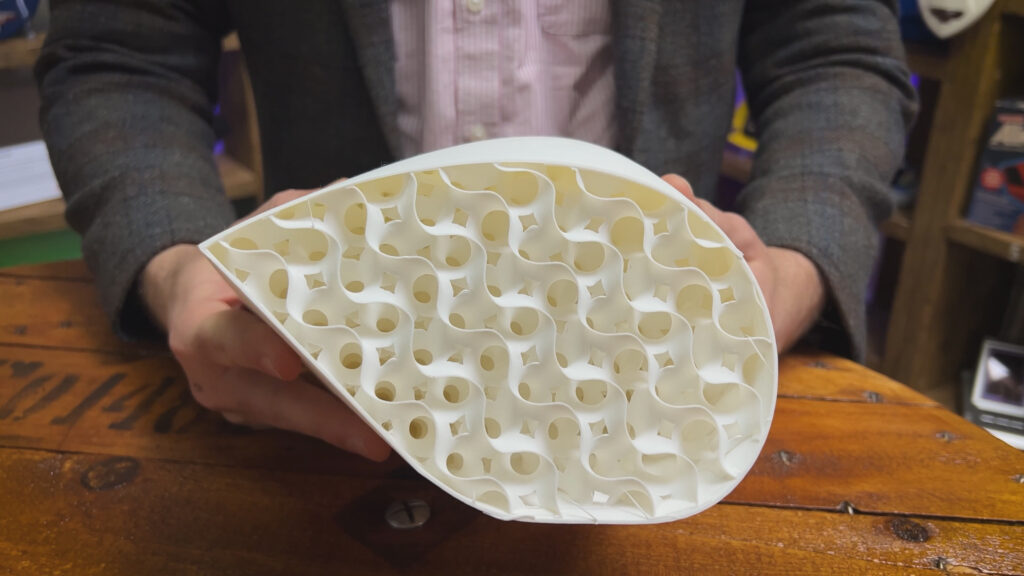
1 – A single 3D printed section of the model

2 – Richard constructs the model
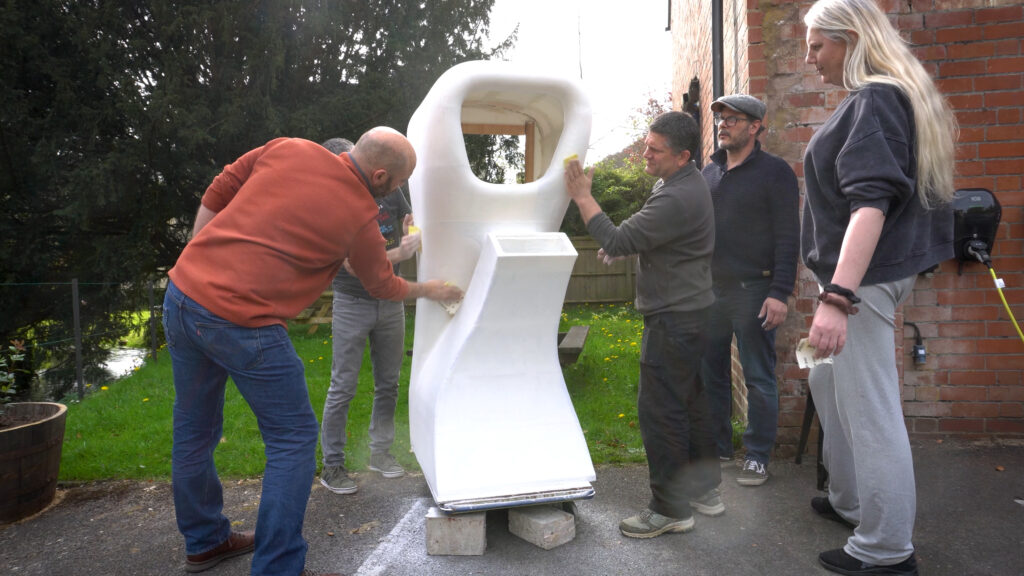
3 – The team sand and smooth the model
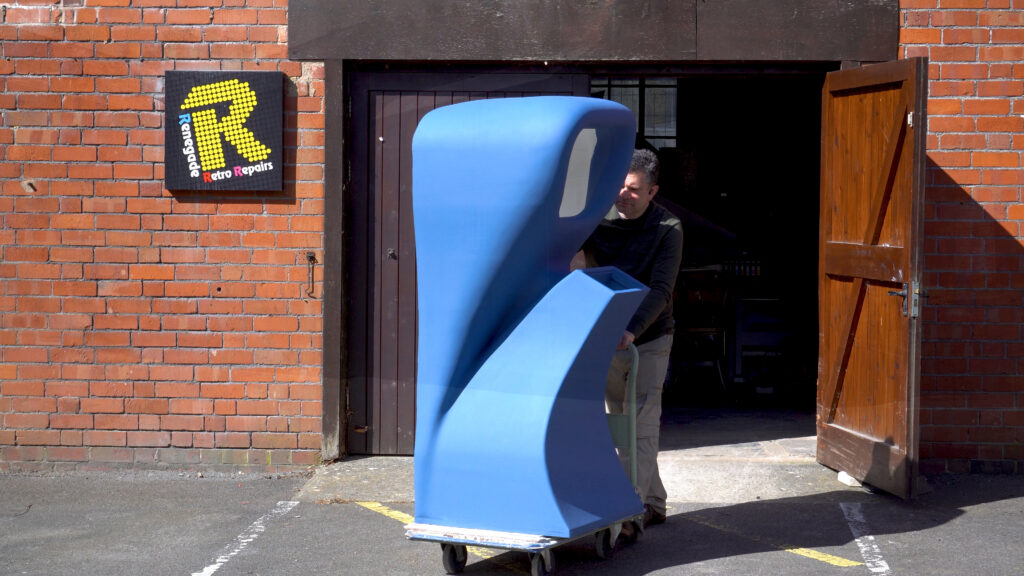
4 – The painted cabinet leaves the workshop to be covered in resin and glitter
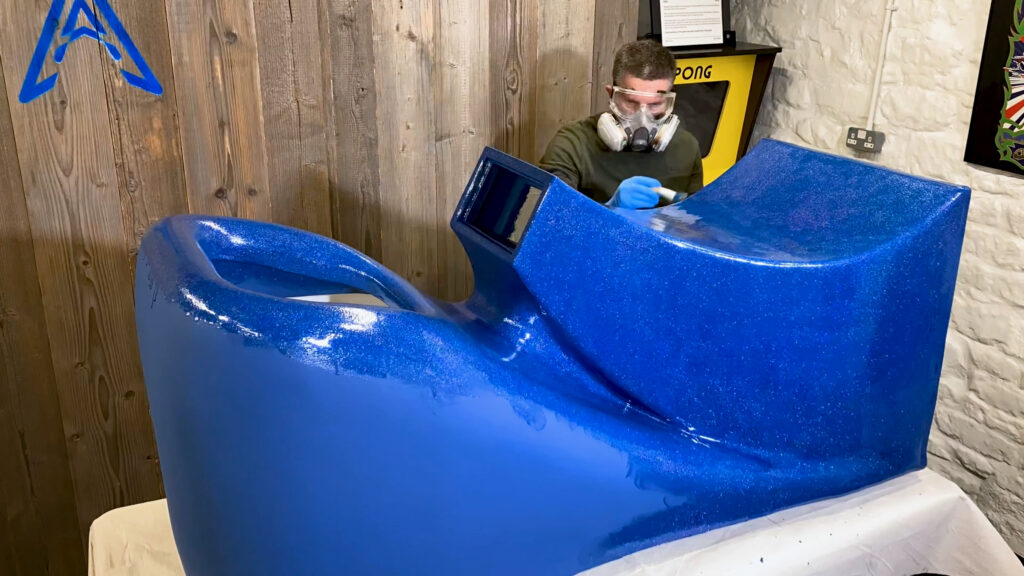
5 – Richard applies the resin and glitter formula
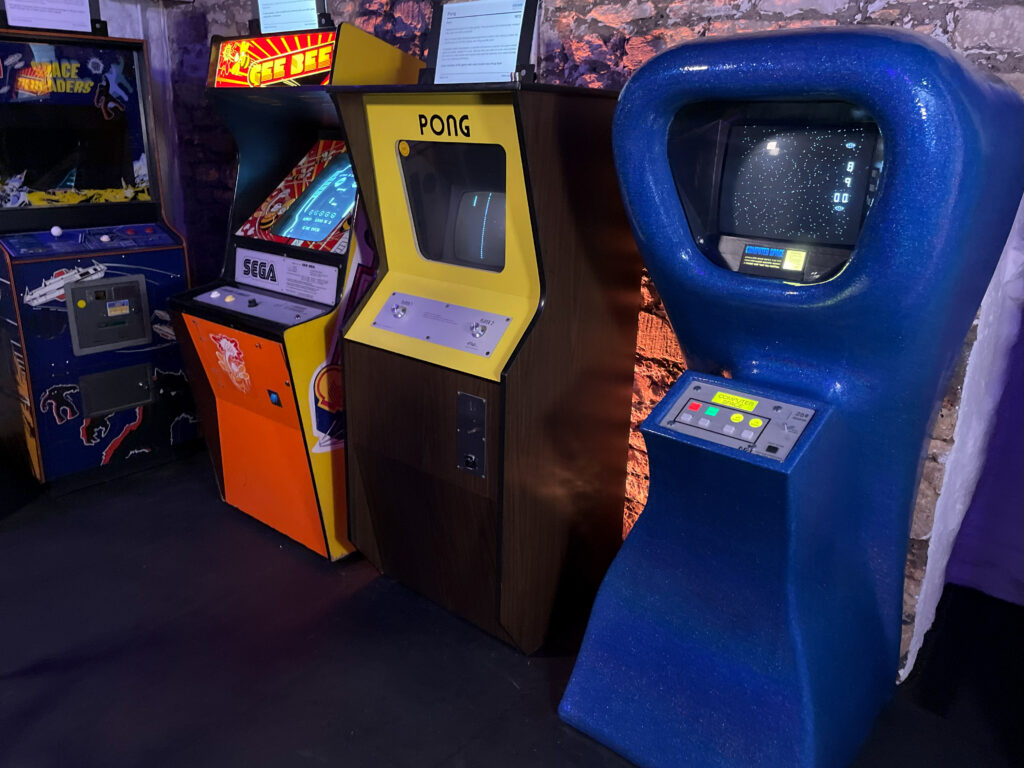
6 – The finished arcade in its new home next to an original Pong
End of release.
